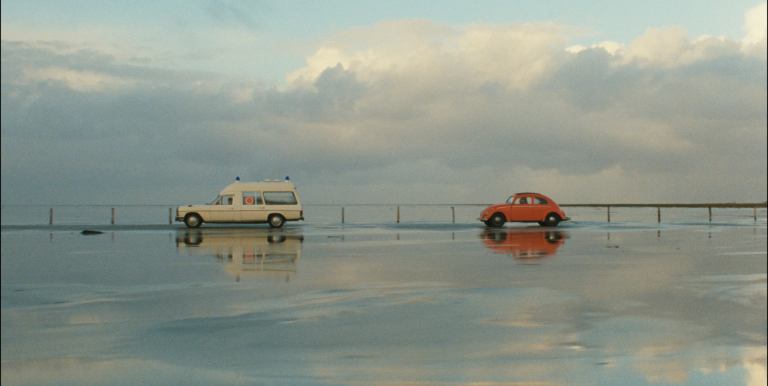Creator:
Featuring:
Once upon a time, perhaps as early as the 1960s, European artists, including filmmakers, began to fall in love with American culture. How did this happen, and why and to what end? This is an exciting question, one worth discussing. Among German filmmakers, Wim Wenders was perhaps the one who showed the strongest affinity in this direction. He directed road movies and westerns and went to America countless times for filming. So he assembled a very good American crime writer (Patricia Highsmith), an American actor (Dennis Hopper), and an American director (Nicholas Ray) who was hired as an actor. And thus was born a European American film: The American Friend.
The story is based on one of Highsmith's Ripley novels and remains faithful to the writer's regularly recurring motif: the meticulously crafted psychological framework of gradually drifting into criminality. (Highsmith's novels have been made into films by more than 40 directors, ranging from Hitchcock to Adrien Lyne.) A falsified medical test pushes the protagonist of the story, the terminally ill picture framer/restorer Jonathan Zimmermann, into a gangster war, and then into murder. However, The American Friend is a much more complicated motion picture than this. From several points of view. Cinematographer Robby Müller, who collaborated with Wenders on several of his works, tells micro-stories within the film with his close-ups that sometimes turn into an attractive whole. And the little world revealed by the camera is populated by furnishings and props that refer to filmmaking and the art of creating images itself. Infusing the film with its unique fragrance is Americanness, from Ripley's car and hat to the soundtrack, in which one of the theme songs from Easy Rider suddenly pops up. Anyone looking for an action movie will be disappointed. The gut-wrenching tensions of The American Friend are produced internally — both inside the characters and within the viewers.
In German, with Hungarian subtitles.
The discussions before and after the screening will be conducted in Hungarian.
Presented by: Müpa Budapest
-
We wish to inform you that in the event that Müpa Budapest's underground garage and outdoor car park are operating at full capacity, it is advisable to plan for increased waiting times when you arrive. In order to avoid this, we recommend that you depart for our events in time, so that you you can find the ideal parking spot quickly and smoothly and arrive for our performance in comfort. The Müpa Budapest underground garage gates will be operated by an automatic number plate recognition system. Parking is free of charge for visitors with tickets to any of our paid performances on that given day. The detailed parking policy of Müpa Budapest is available here.















